Savvy Reasons to Save Your Rinds!
Straight from a terrific site, A Thrifty Mrs. (www.athriftymrs.com), comes some savvy advice: “Make sure you never ever throw away your Parmesan rind when you reach the end of your wedge of delicious cheese. Parmesan rinds are an often discarded food which has many uses, so make sure you use it to its full advantage.”
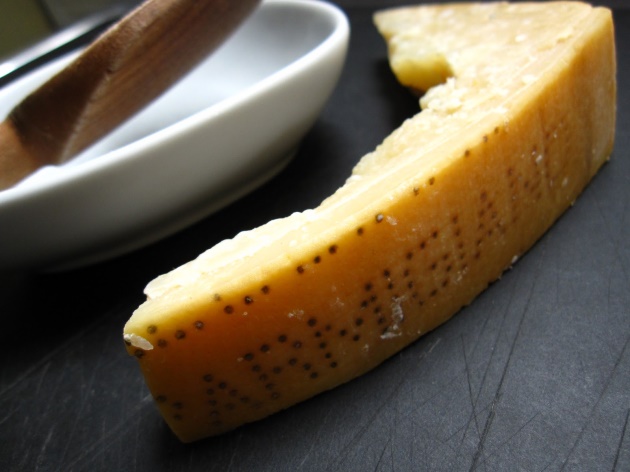
Now I’ve been on the chintzy side when it comes to Parmesan cheese. Too often I’ve opted for the canned grated stuff (think the paperboard green can found by the dried pastas). So the habit of tossing out a Parmesan cheese rind has never been in my repertoire. BUT, after reading what the Thrifty Mrs. has to say about all the ways you can use these, I can see it would be smart to start buying the real deal—Parmesan in wedges with the rind.
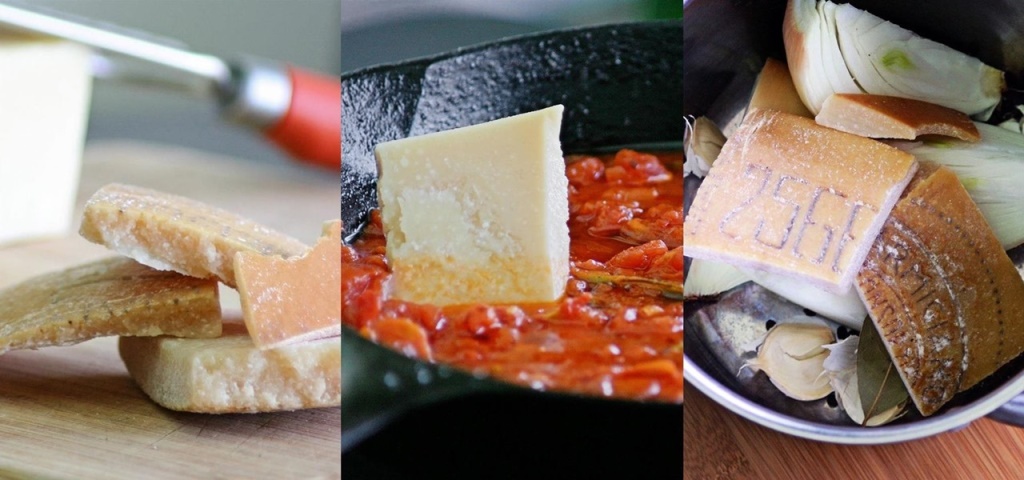
The Thrifty Mrs. says these rinds can be used fresh, and they freeze perfectly well for use later on in an assortment of delicious ways. So even if these fresh wedges are more expensive up front, when you consider all dishes you can make with them, they turn out to be a money-saver in the long run.
Just a note regarding prepping your rind: Be sure to remove any wax or plastic coverings before cooking or serving and to fish the rind out of your cooking pot before serving.
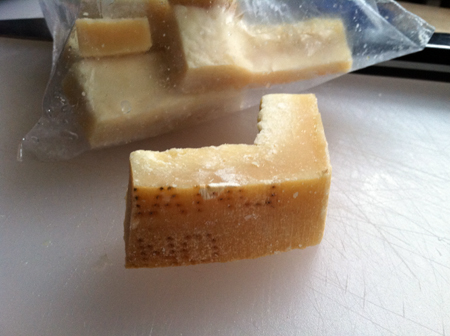
FROM FROZEN OR FRESH:
1. Add the whole rind (or even just cut off a chunk if you are cooking for only one or 2 people) into the pan when you cook up a batch of soup. The bits of cheese clinging to the rind will melt and give the soup lots of extra flavor and depth.
2. Add to your water when cooking rice, quinoa, and bulgur.
3. Add to your water when cooking macaroni for macaroni and cheese.
4. Add the rind to your stock pot; whether making beef, chicken, or vegetable, the parmesan rind will contribute extra flavor and a spizazz you wouldn’t get otherwise.
5. The parmesan rind will add extra flavor to all Italian style sauces, so be sure to drop one in.
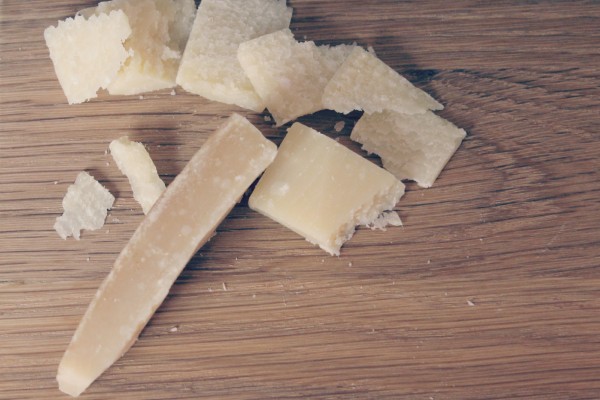
FRESH:
6. Place in an air tight glass jar and cover with olive oil, garlic cloves or lemon or even perhaps a few chopped chilies. Allow this to sit and infuse for a couple of weeks. This is delicious as a dipping oil for bread.
7. If there is no wax or plastic attached to the rind, wrap it in foil and add place it on the rack of an already-in-use oven; remove once the cheese is melted and voila, you have delicious cheese for smothering across bread.
The Thrifty Mrs. also has a smart idea for keeping your cheeses fresher longer: To stop those ends and sides going hard, or even to restore them if the ‘hardness’ has only just set in, rub a tiny bit of butter along the edges. And if the ends have already gone a bit hard, just cut them off, and freeze for later use in sauces, soups, stews, and chowders.
I’ll close with a recipe using fresh Parmesan cheese. This is for a cheese crisp that’s all grown up. These sophisticated garnishes are an excellent addition to salads and soups.
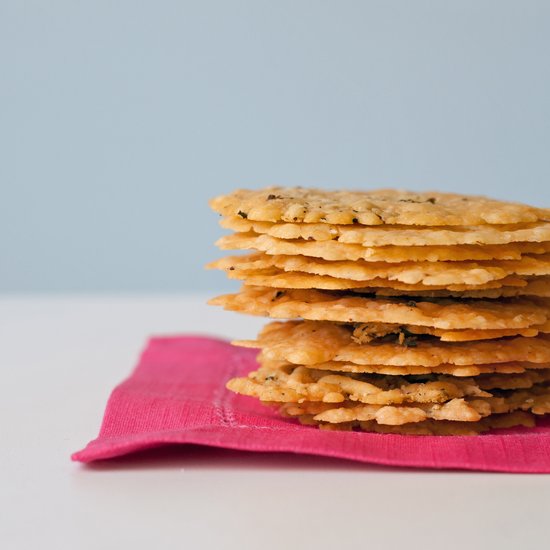
PARMESAN FRICOS
1 10-ounce wedge fresh Parmesan cheese
2 ¾ tablespoons all-purpose flour
½ teaspoon freshly ground black pepper
¾ teaspoon herbes de Provence, optional
Preheat oven to 375°F. Line a half sheet pan with a silpat (silicone baking mat) or parchment paper
Using the largest holes on a box grater, coarsely shred the cheese.
Stir together the cheese, flour, pepper, and herbes de Provence in a large mixing bowl.
Arrange tablespoons of cheese four inches apart on the silpat, stirring the cheese mixture in the bowl between tablespoons to keep the flour evenly distributed.
Flatten each mound slightly with your fingertips to form a three-inch round.
Bake the fricos until golden, about 10-12 minutes.
Cool two minutes on the half sheet pan, then carefully transfer each crisp (they are very delicate) with a thin spatula to a rack to cool completely.
- www.madamefromage.blogspot.com
- www.athriftymrs.com
- www.debbiekoenig.com
- www.food-hacks.wonderhowto.com
- www.popsugar.com
 Alice Osborne
Alice Osborne
Weekly Newsletter Contributor since 2006
Email the author! alice@dvo.com
